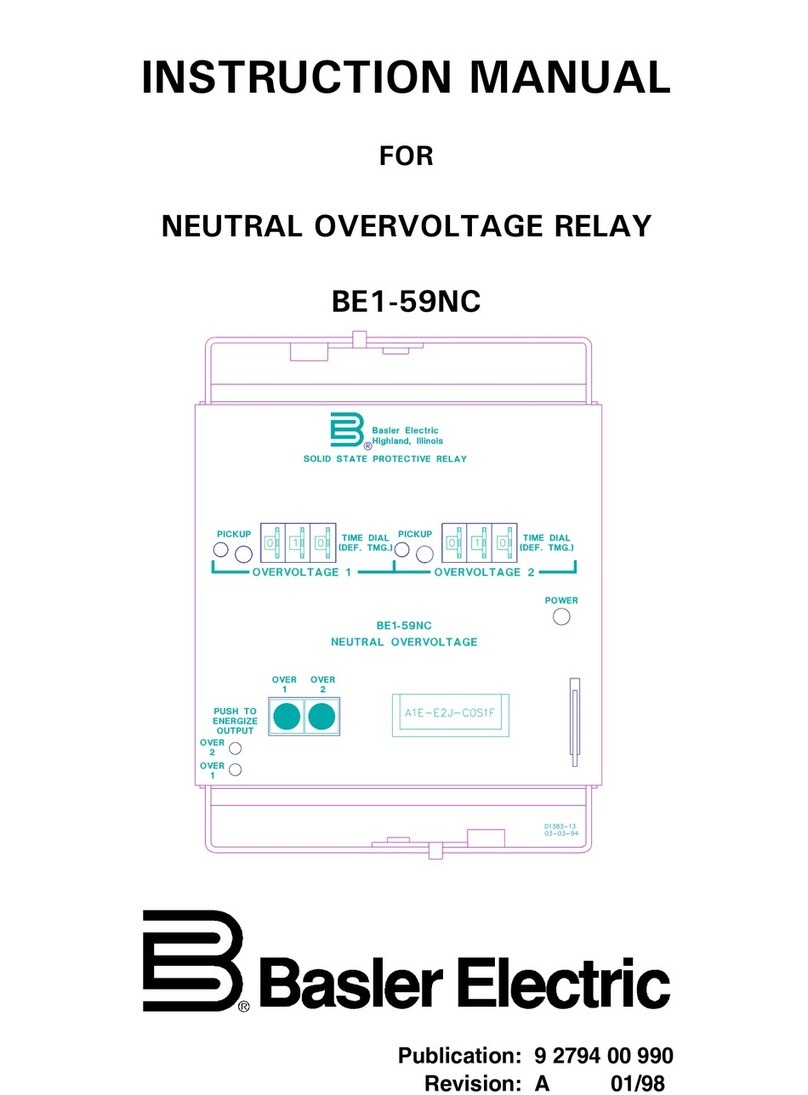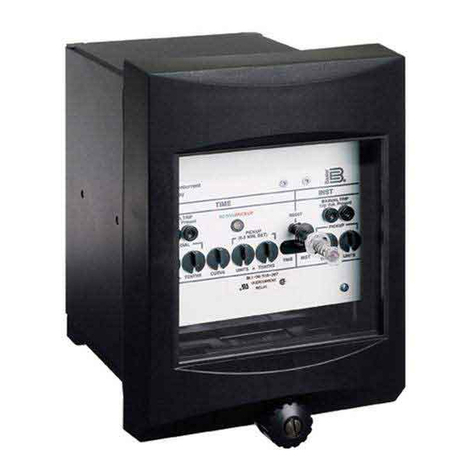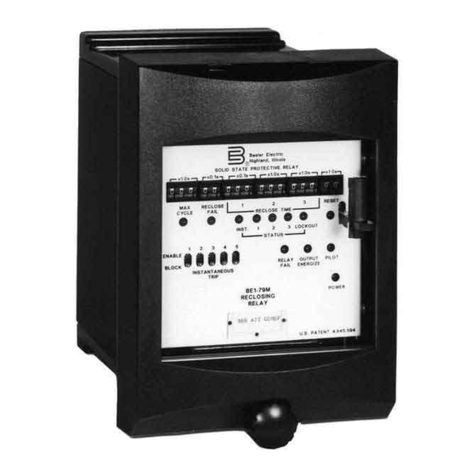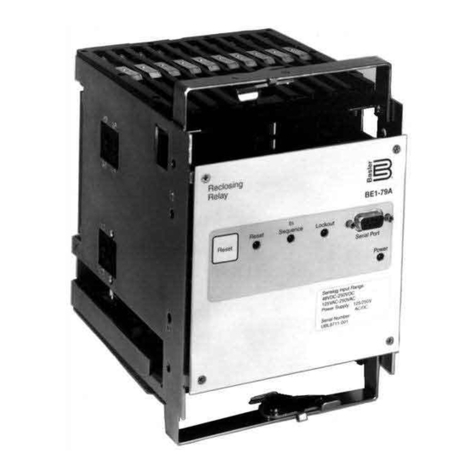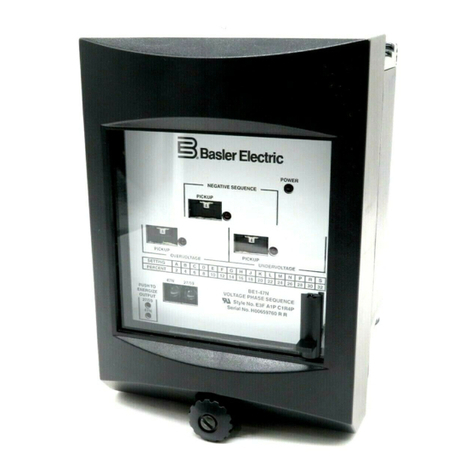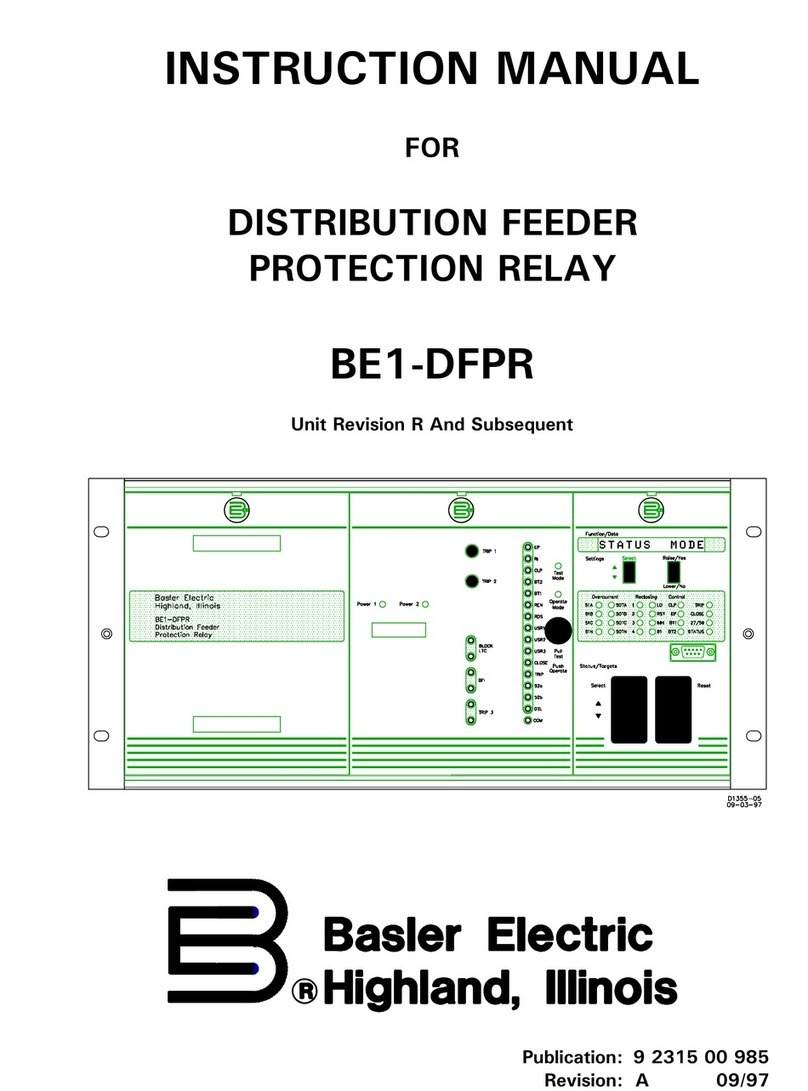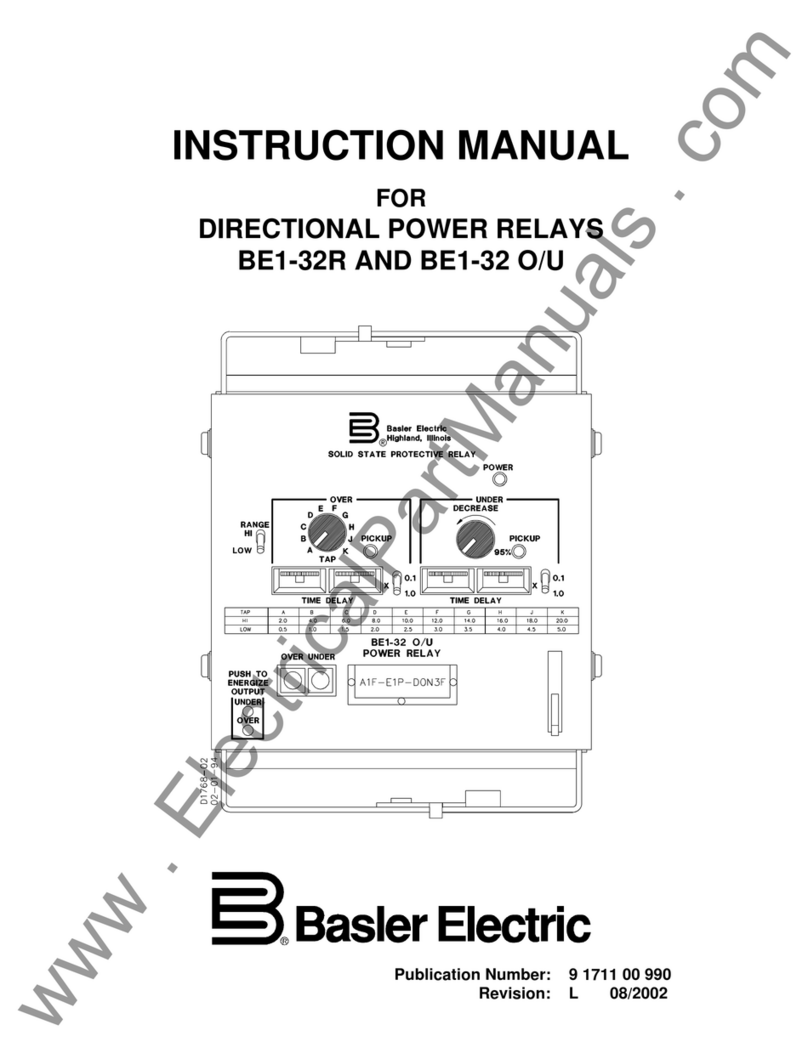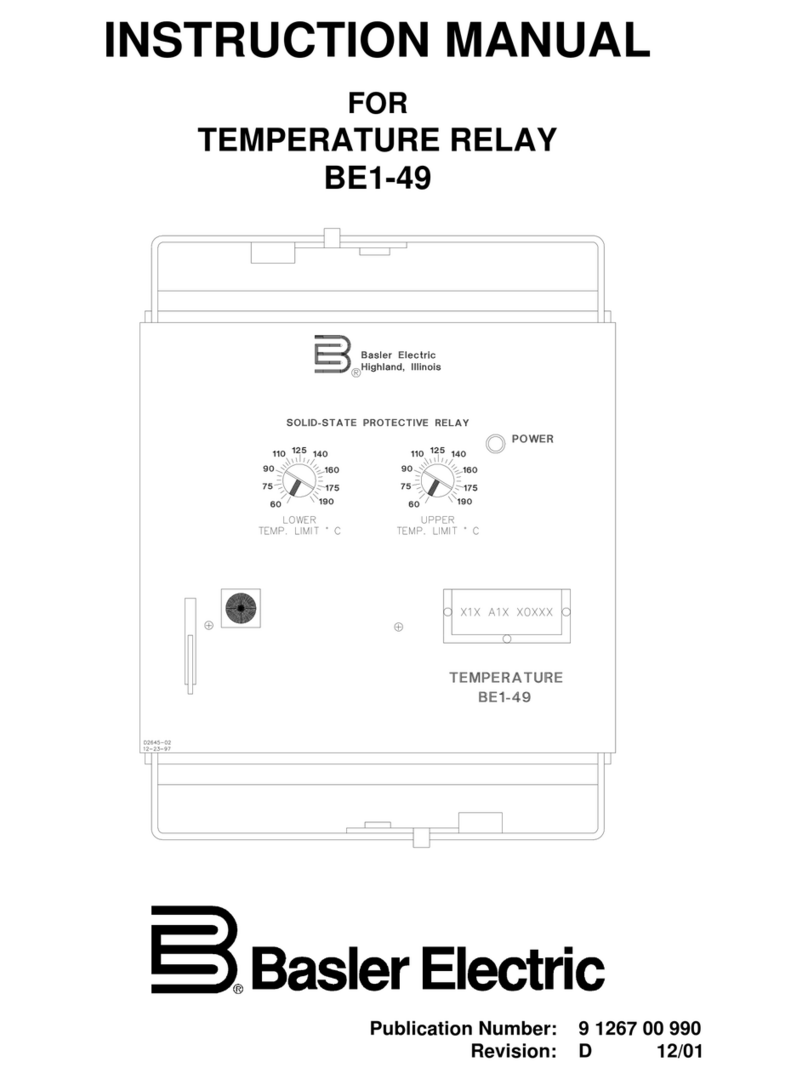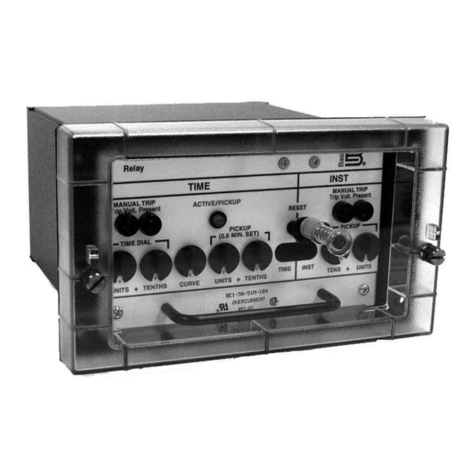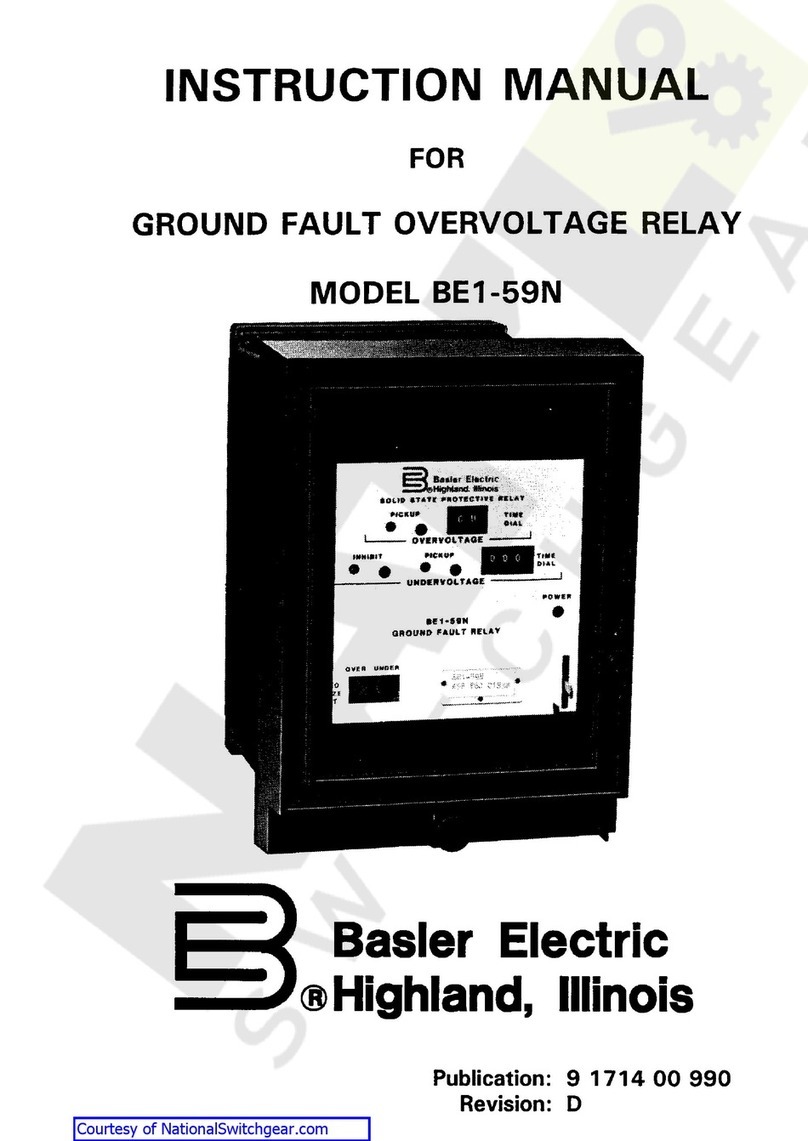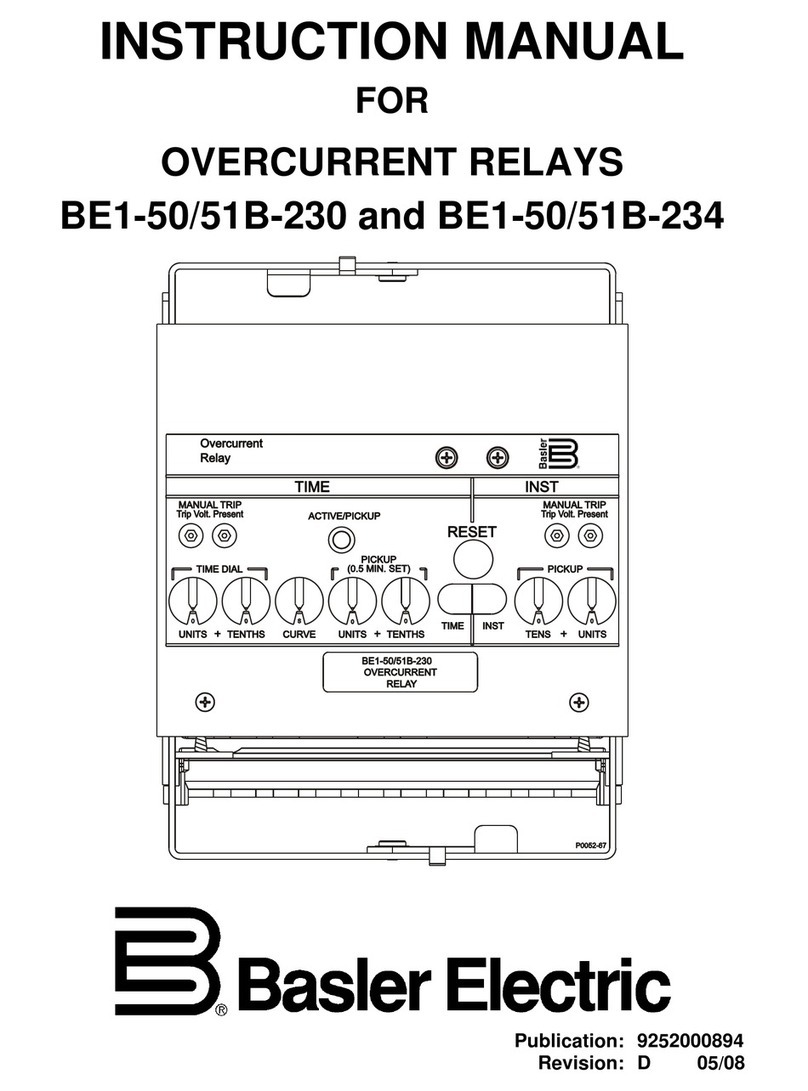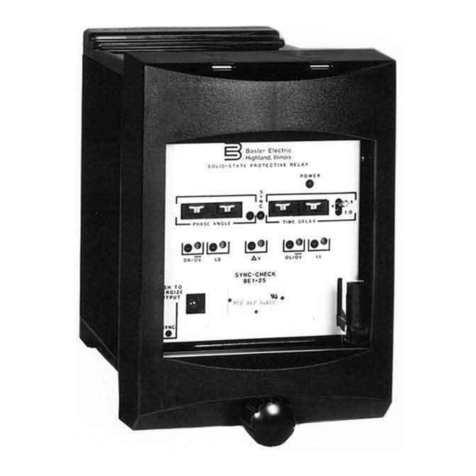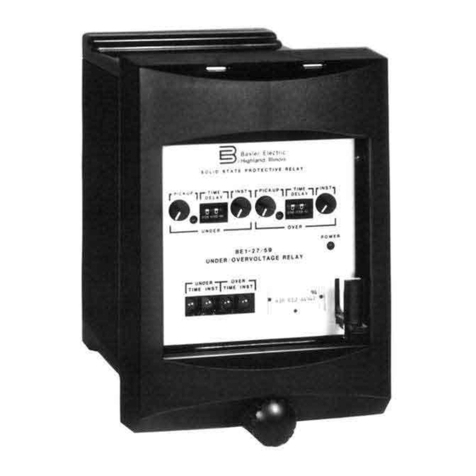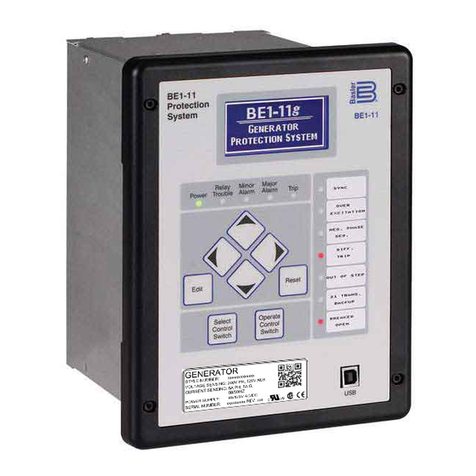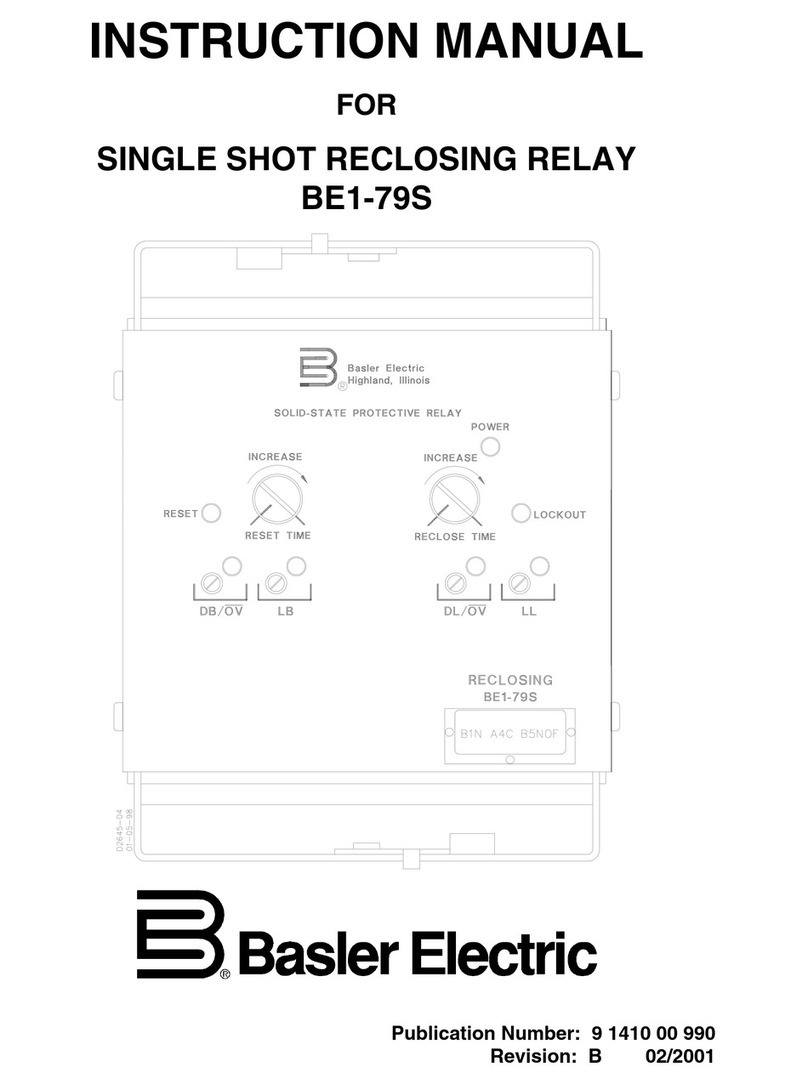
BE1-50BF General Information 1-1
SECTION 1 • GENERAL INFORMATION
DESCRIPTION
BE1-50BF Breaker Failure Relays are three-phase, solid state relays designed to provide protection and
security for the power system against failure of the monitored breaker.
Breakerfailurerelayingistheuseofacurrentmonitoringrelaytodeterminewhether ornot currentcontinues
to flow into a faulted circuit some time after a circuit breaker has been instructed to interrupt the circuit. In
the event that current continues to flow into the faulted circuit (after a defined period of time has elapsed
sufficientforthebreakertohaveinterruptedthecurrent),thenthecircuitbreakerisconsideredtohavefailed,
and steps must be initiated to trip the next set of breakers in the power system. The back up scheme must
be designed to isolate both the faulted circuit and the failed breaker.
Following are several reasons why a breaker fails to clear a fault:
Trip circuit can be open (broken wire, blown fuse, open trip coil).
Interrupting mechanism can stick, leaving a single phase of a three-phase circuit connected.
Interrupter can flash-over due to the loss of dielectric strength through contamination or damage.
Operating mechanism can fail to operate.
Breaker failure relays detect these conditions and initiate contingency or back up procedures.
Typically, breaker failure protection is applied to transmission and subtransmission systems. However,
breaker failure protection may be applied to any portion of the power system where failure of a circuit
breaker to operate properly could result in severe system damage or instability.
Trip Timing
Within the relay are two timers that control operation of the device. Timer 1 defines the delay time between
recognition of the breaker trip signal and the interrogation of the current monitoring circuits for the presence
of current. Adjustment range for this timer is 18 to 500 milliseconds.
At the same time that timer 1 is initiated, the control timer is also initiated. Figure 1-1 illustrates the trip
timing relationships. The purpose of the control timer is to increase security by limiting the response time
of the relay to a short period following any given attempt to interrupt the breaker. The control timer also
terminates the closure of the BF output relays, and breaks the seal of the seal-in circuit (if used).
Breaker failure initiate (BFI) input seal-in is selected by closing printed circuit board switch S1-3 (refer to
Section 2 for location). This selection may be required when current from an isolated weak source cannot
be depended on to maintain the minimum signal level to the protective relays initiating the BFI input. Such
a condition can occur when the fault voltage is depressed to zero. The seal-in feature may also counteract
contact bounce.
An optional supervisory contact input to the BE1-50BF relay may be specified. When the supervisory
contact input is specified, a third timer (timer 2) is built into the relay. Timer 2 (plus associated circuitry
together with the supervisory contact) duplicates the corresponding features of the timer 1 system. This
addition allows different breaker failure times for different types of failures.
As an example, it might be desirable to use a shorter tripping time if the breaker mechanism fails to operate
(all three breaker poles failed to clear the fault). If the mechanism did operate, but only one of the poles
failed to clear, a longer breaker failure time might be appropriate. This protection can be provided by
connecting a 52a contact of the breaker to the supervisory contact input and setting the delay on timer 2
shorter than timer 1. If the breaker mechanism failed to operate, the breaker failure relay would be
controlled by timer 2. If the breaker mechanism did operate, timer 2 would (in time) reset, and the breaker
failure relay would be controlled by timer 1.
